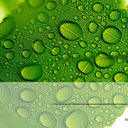Anti-inflammation effects of picroside 2 in cerebral ischemic injury rats.
キーワード
概要
BACKGROUND
Excitatory amino acid toxicity, oxidative stress, intracellular calcium overload, as well as inflammation and apoptosis are involved in the pathological process after cerebral ischemic reperfusion injury. Picrodide 2 could inhibit neuronal apoptosis and play anti-oxidant and anti-inflammation role in cerebral ischemia/reperfusion injuries, but the exact mechanism is not very clear. This study aims to explore the anti-inflammation mechanism of picroside 2 in cerebral ischemic reperfusion injury in rats.
METHODS
The middle cerebral artery occlusion reperfusion models were established with intraluminal thread methods in 90 adult healthy female Wistar rats. Picroside 2 and salvianic acid A sodium were respectively injected from tail vein at the dosage of 10 mg/kg for treatment. The neurobehavioral function was evaluated with Bederson's test and the cerebral infarction volume was observed with tetrazolium chloride (TTC) staining. The apoptotic cells were counted by in situ terminal deoxynucleotidyl transferase-mediated biotinylated deoxyuridine triphosphate nick end labeling (TUNEL) assay. The immunohistochemistry stain was used to determine the expressions of toll-like receptor 4 (TLR4), nuclear transcription factor kappaB (NFkappaB) and tumor necrosis factor alpha (TNFalpha). The concentrations of TLR4, NFkappaB and TNFalpha in brain tissue were determined by enzyme linked immunosorbent assay (ELISA).
RESULTS
After cerebral ischemic reperfusion, the rats showed neurobehavioral function deficit and cerebral infarction in the ischemic hemisphere. The number of apoptotic cells, the expressions and the concentrations in brain tissue of TLR4, NFkappaB and TNFalpha in ischemia control group increased significantly than those in the sham operative group (P < 0.01). Compared with the ischemia control group, the neurobehavioral scores, the infarction volumes, the apoptotic cells, the expressions and concentrations in brain tissue of TLR4, NFkappaB and TNFalpha were obviously decreased both in the picroside 2 and salvianic acid A sodium groups (P < 0.01). There was no statistical difference between the two treatment groups in above indexes (P > 0.05).
CONCLUSIONS
Picroside 2 could down-regulate the expressions of TLR4, NFkappaB and TNFalpha to inhibit apoptosis and inflammation induced by cerebral ischemic reperfusion injury and improve the neurobehavioral function of rats.



